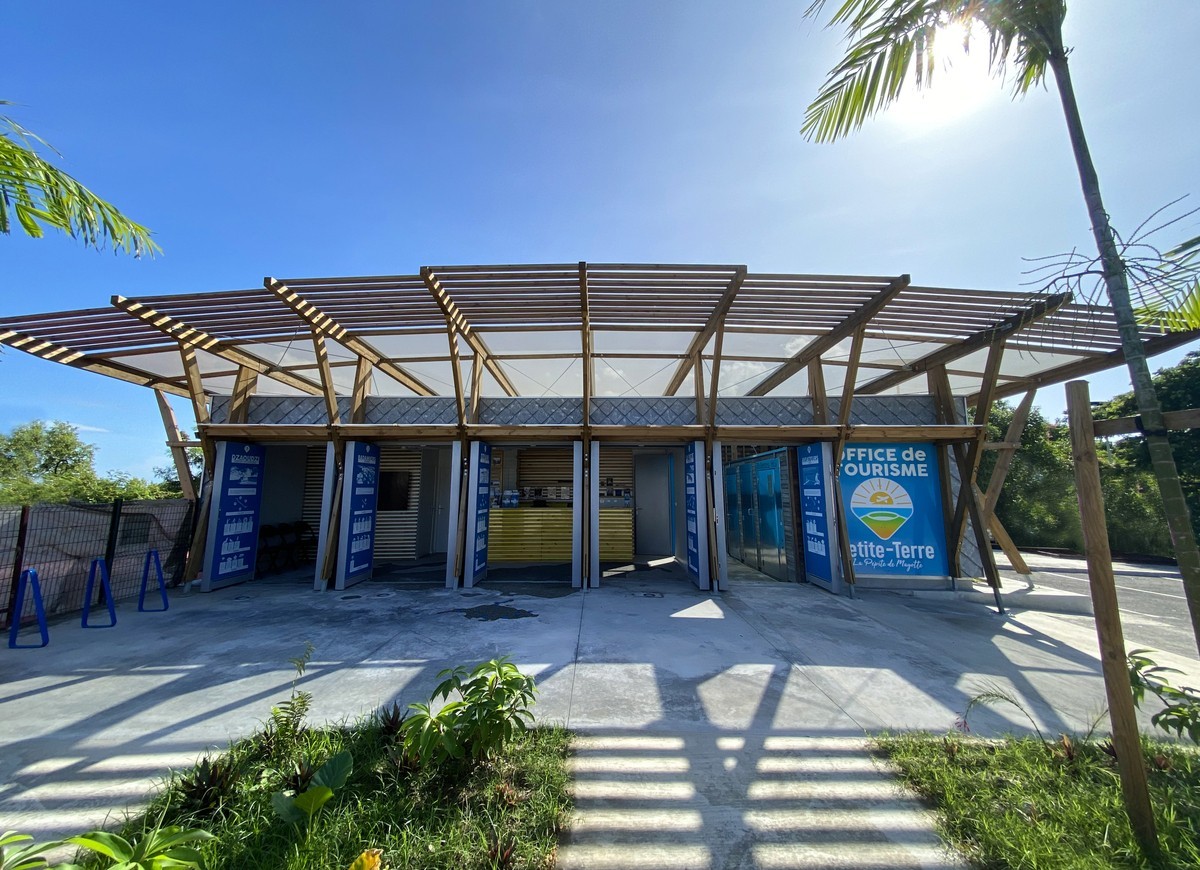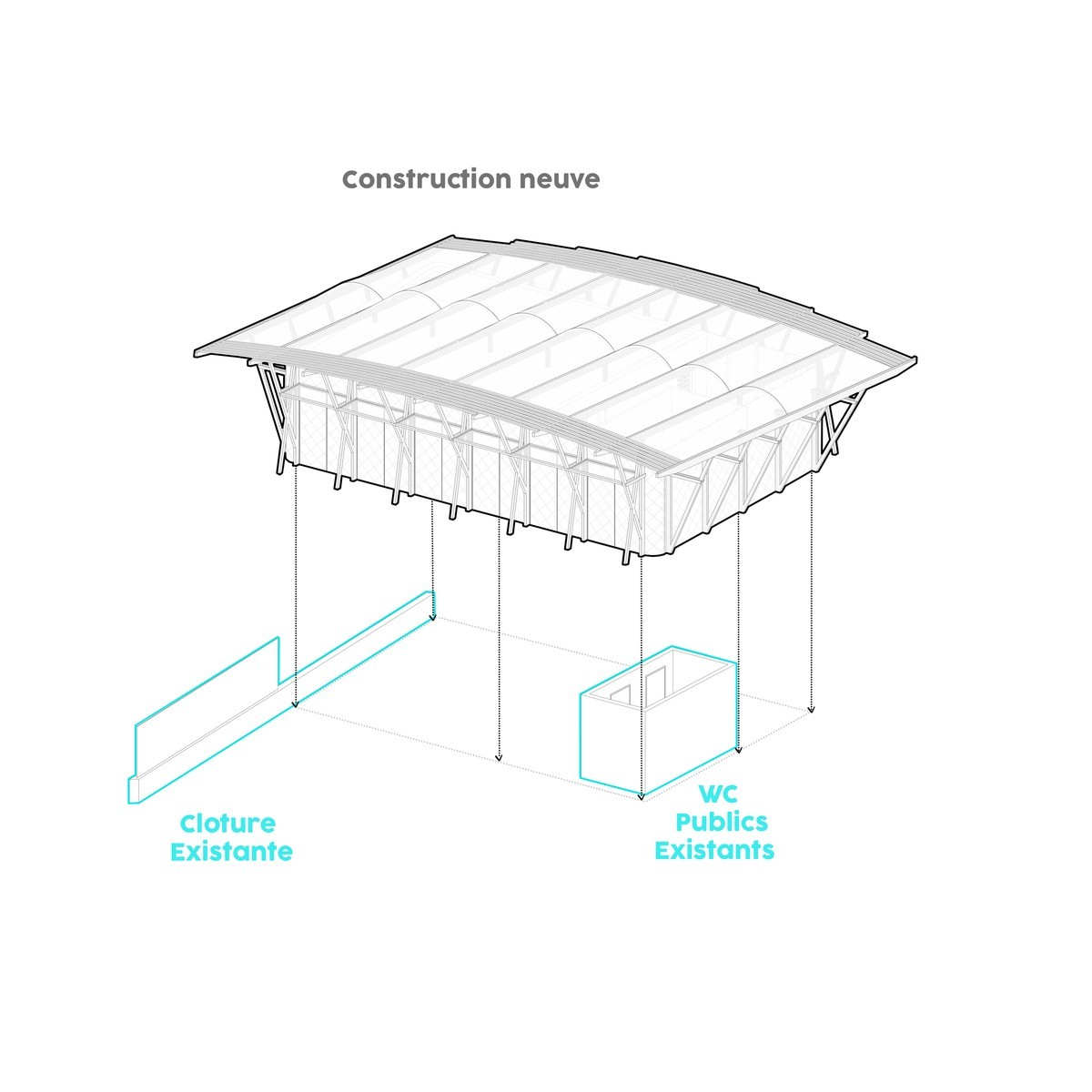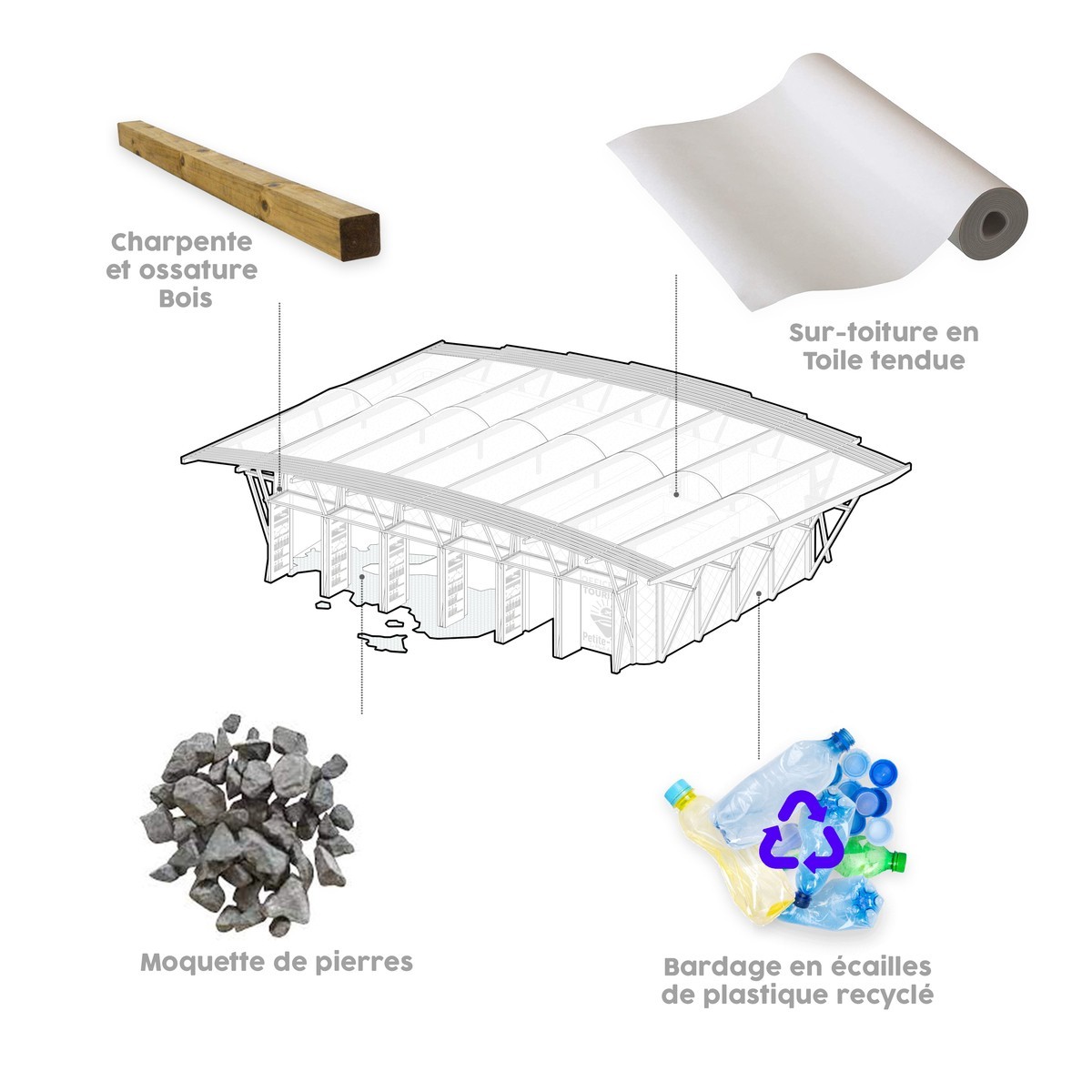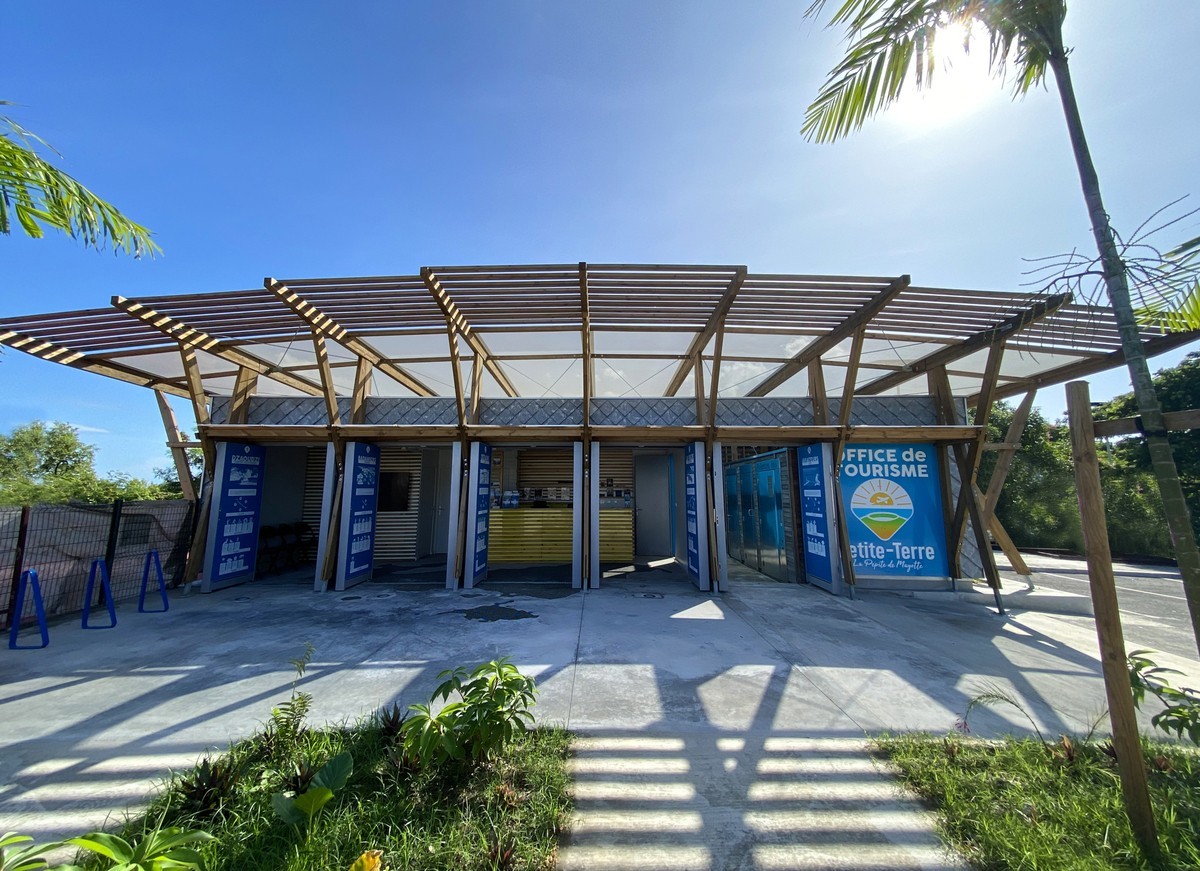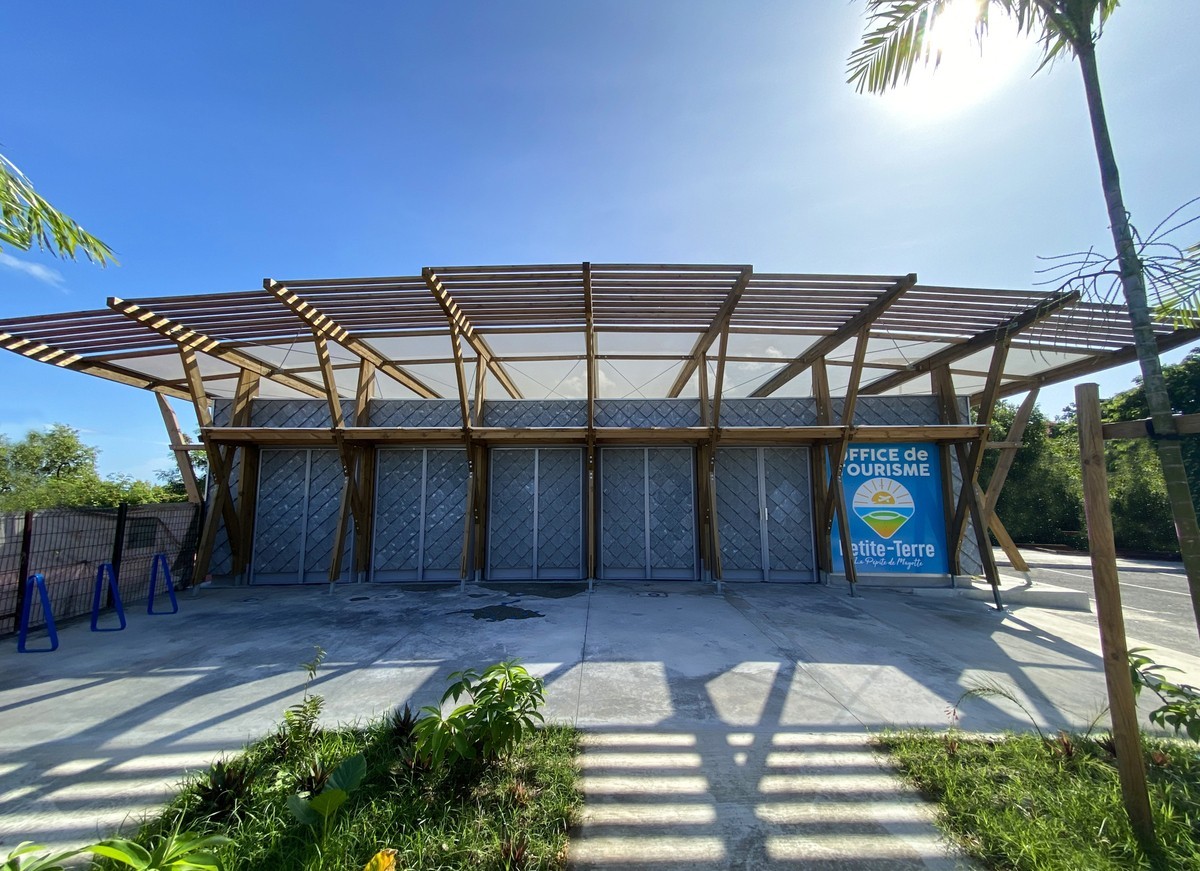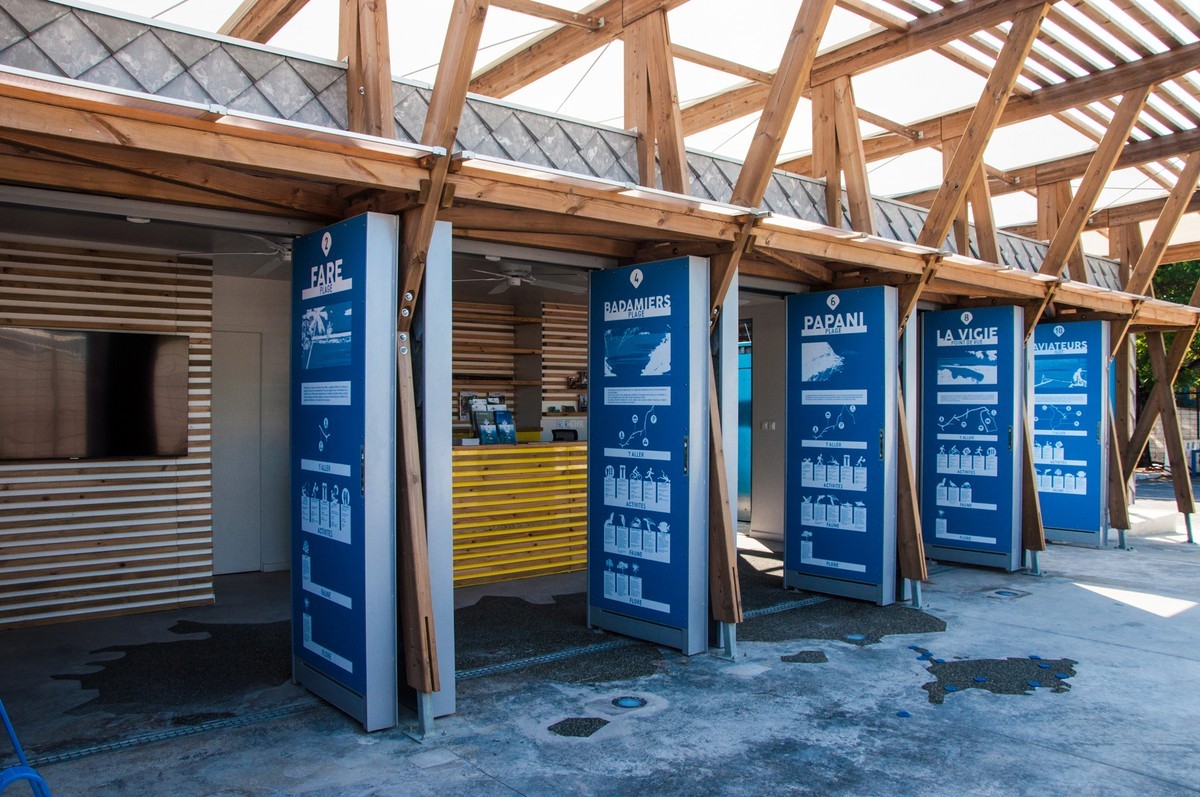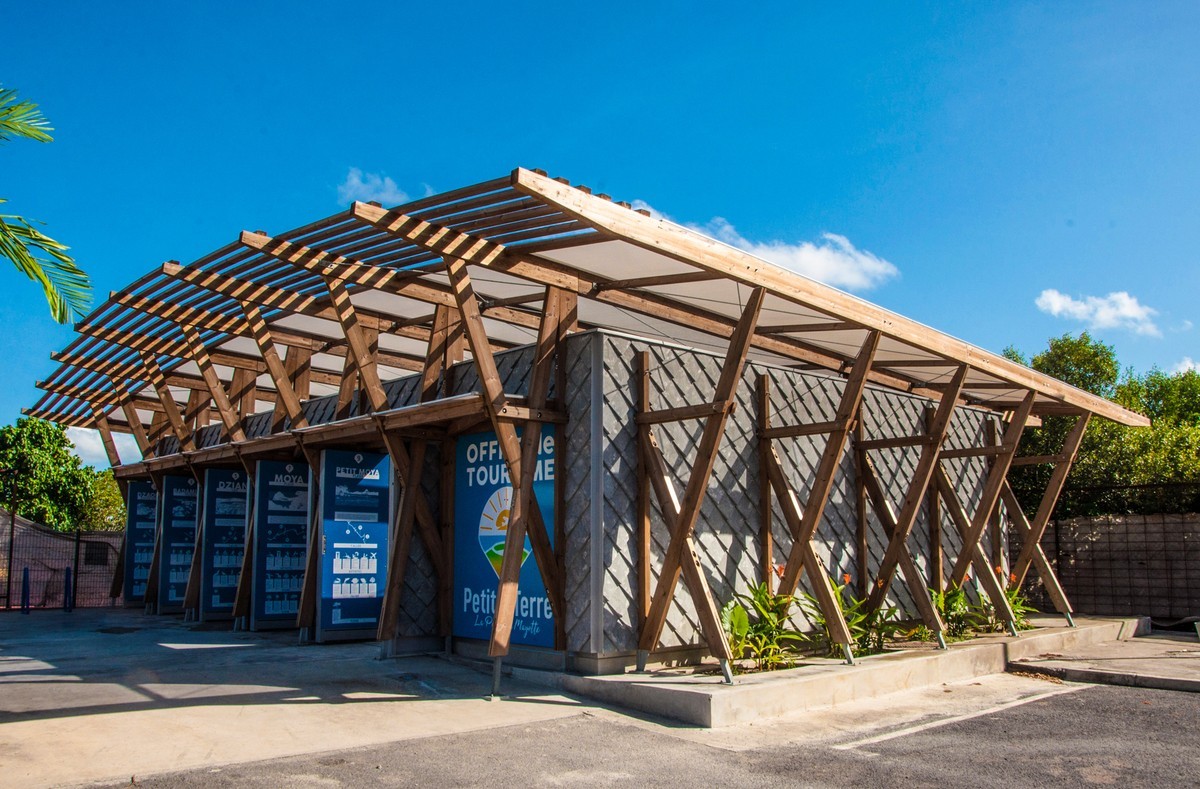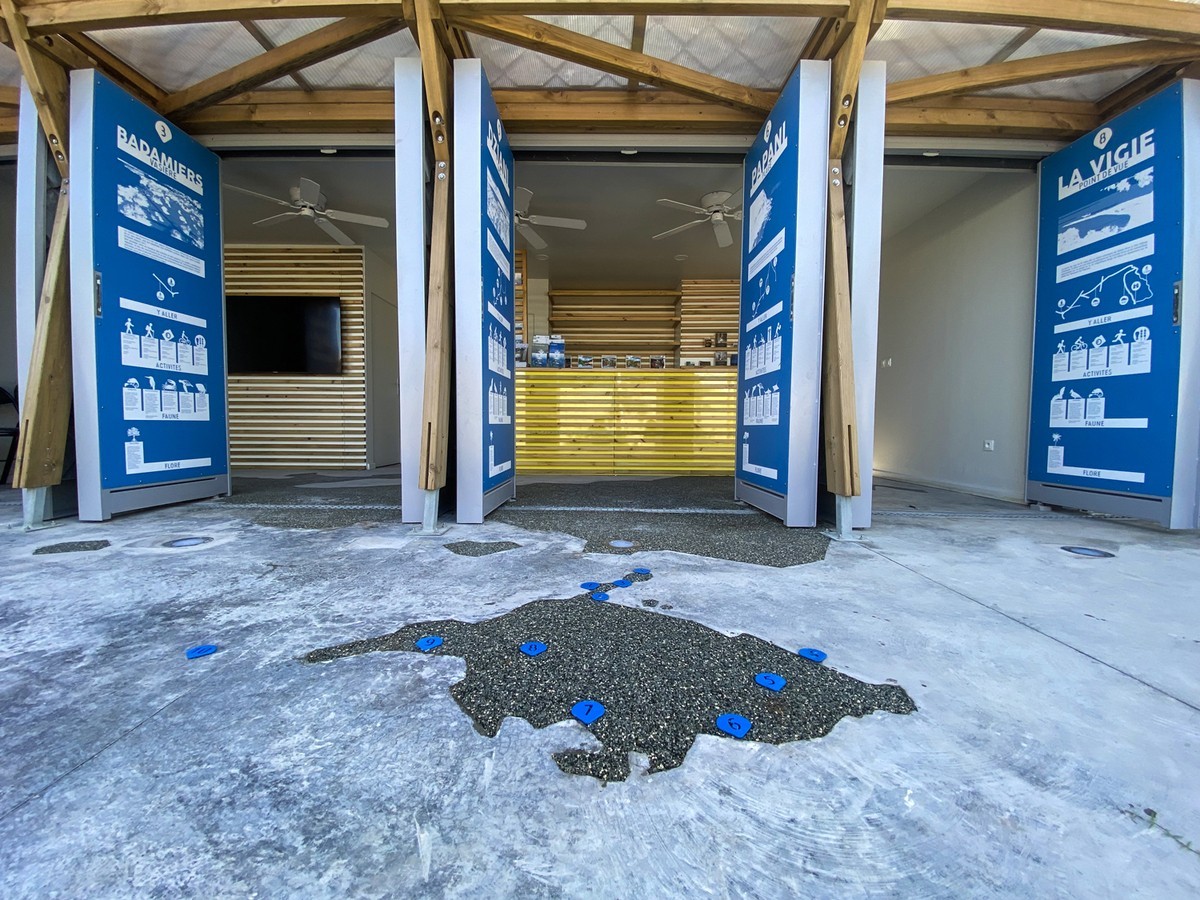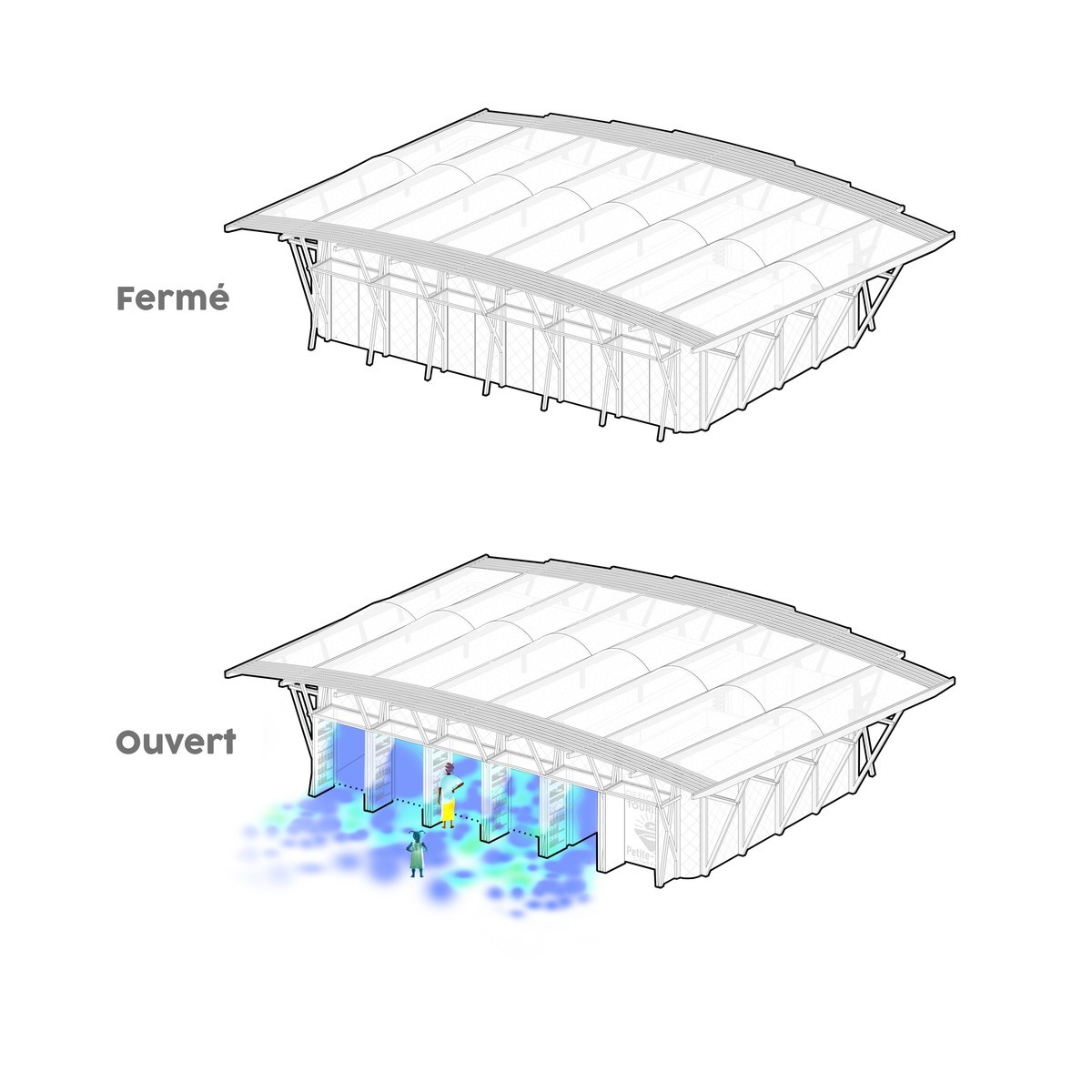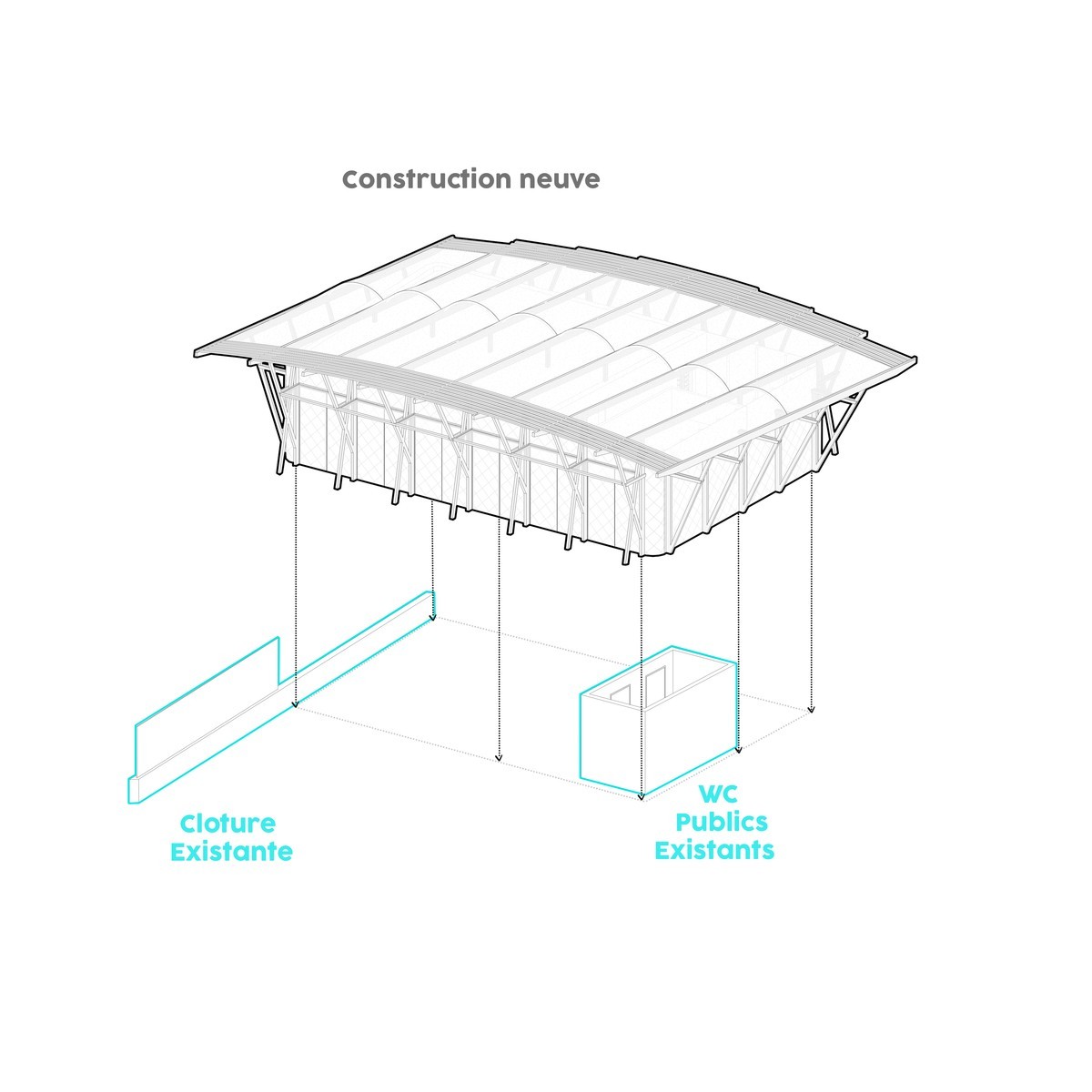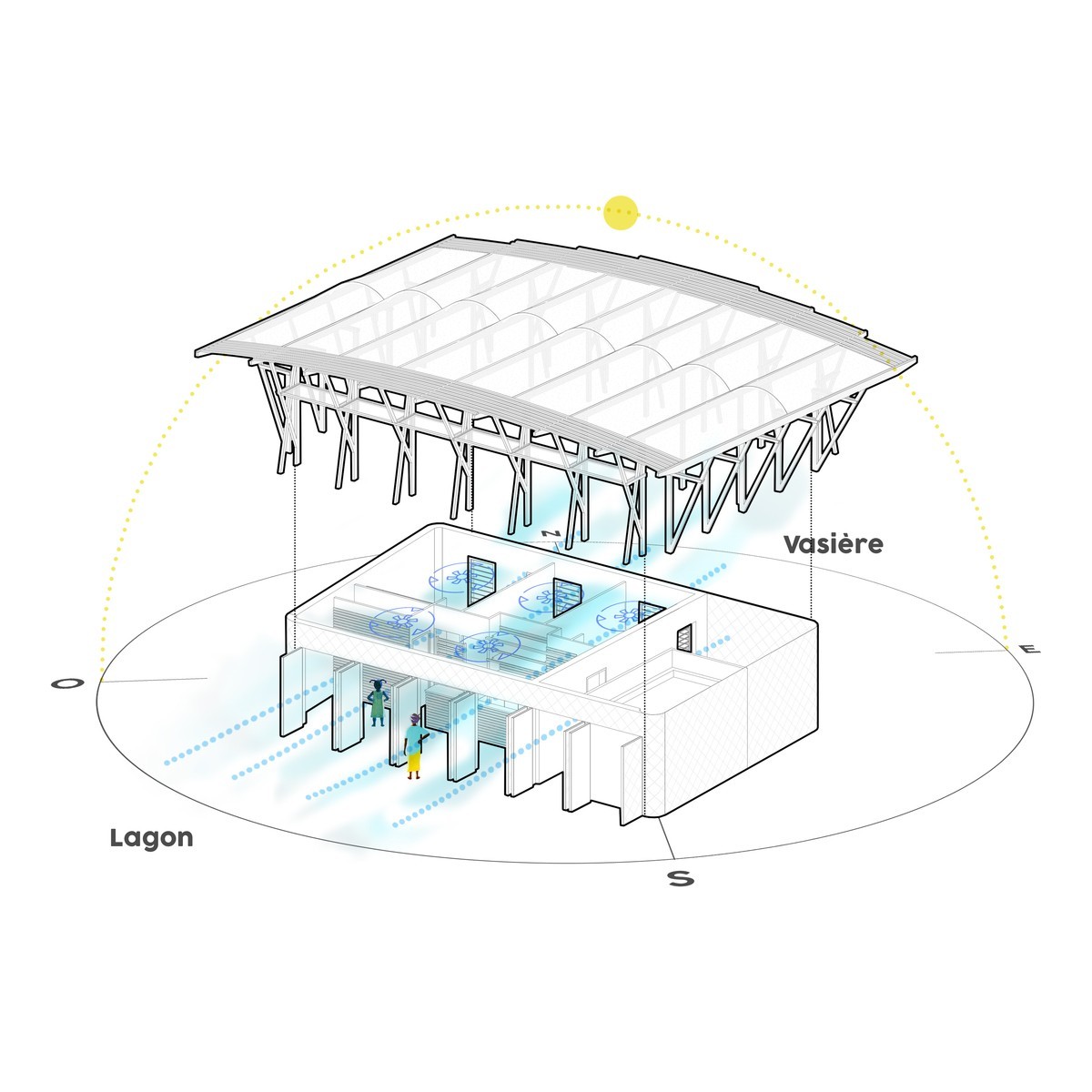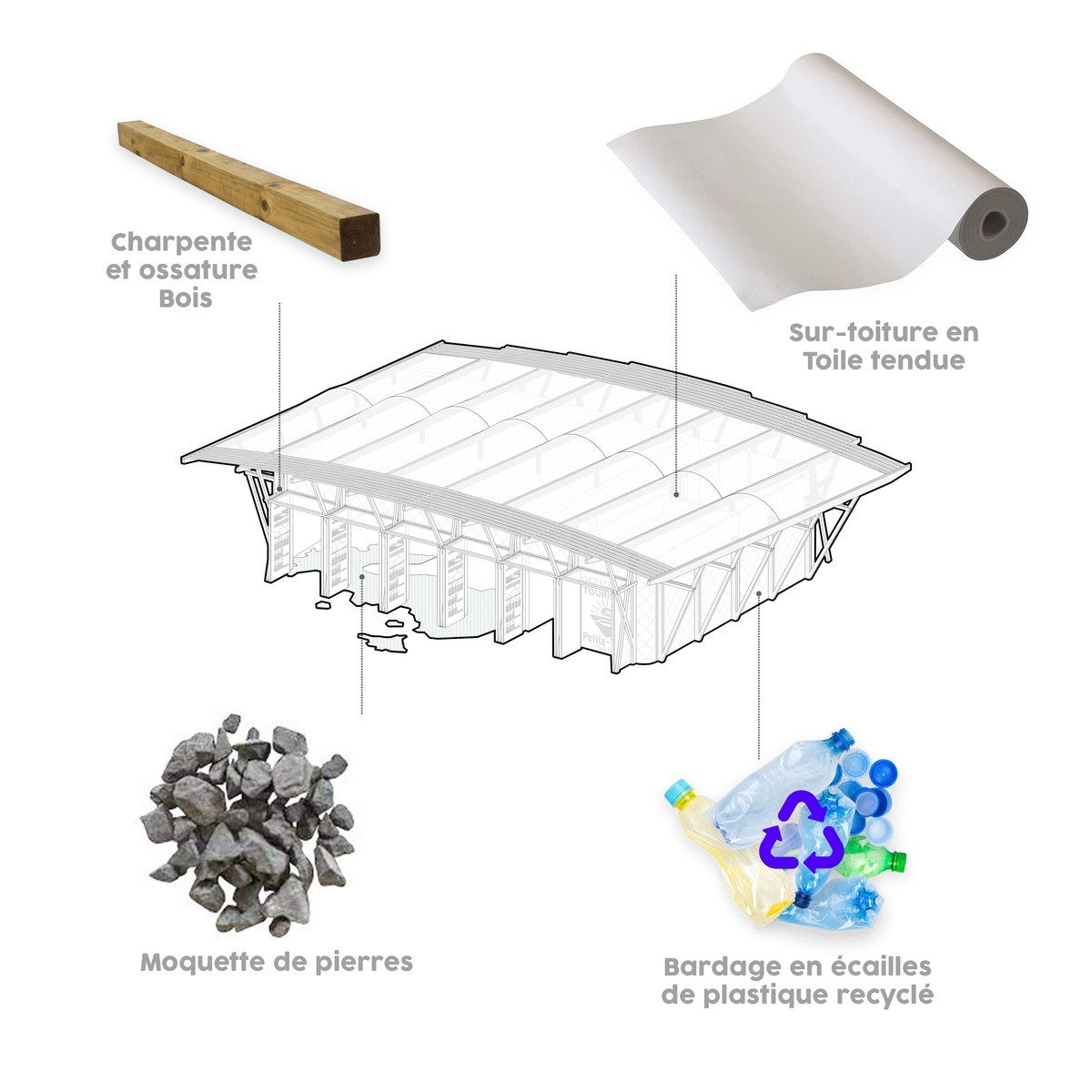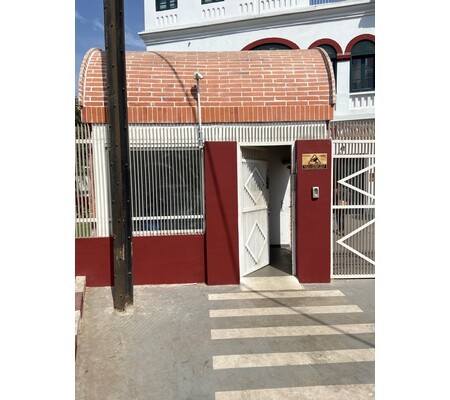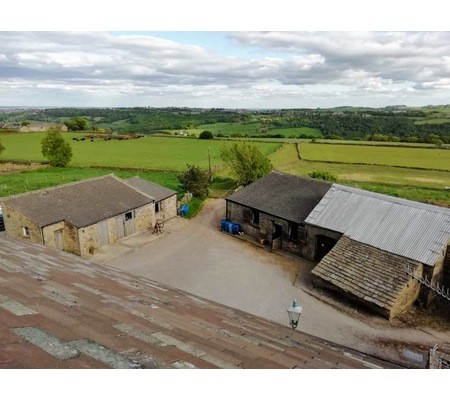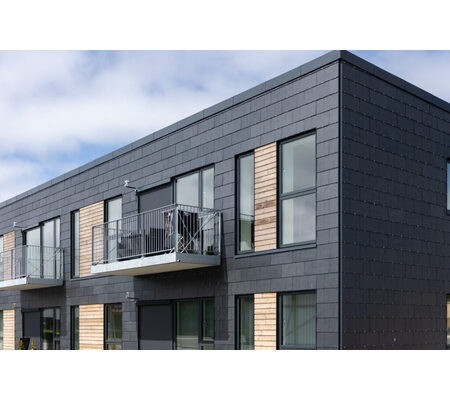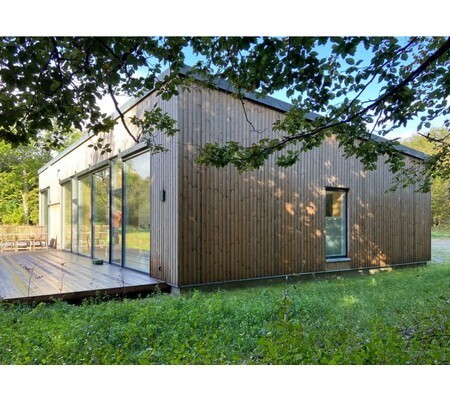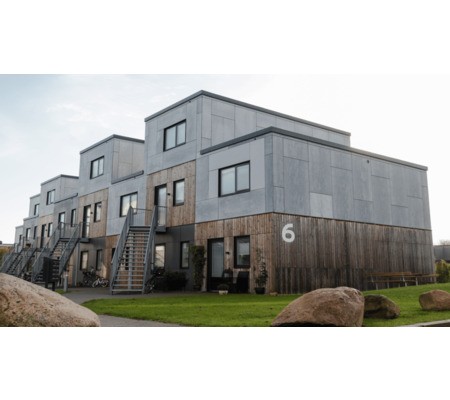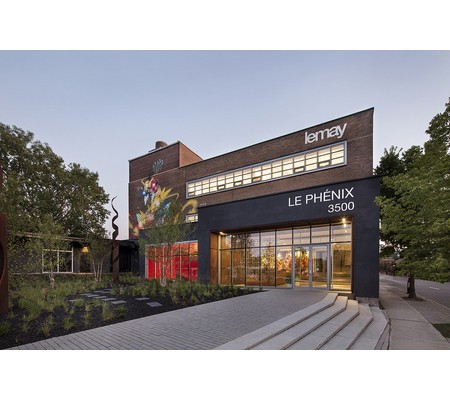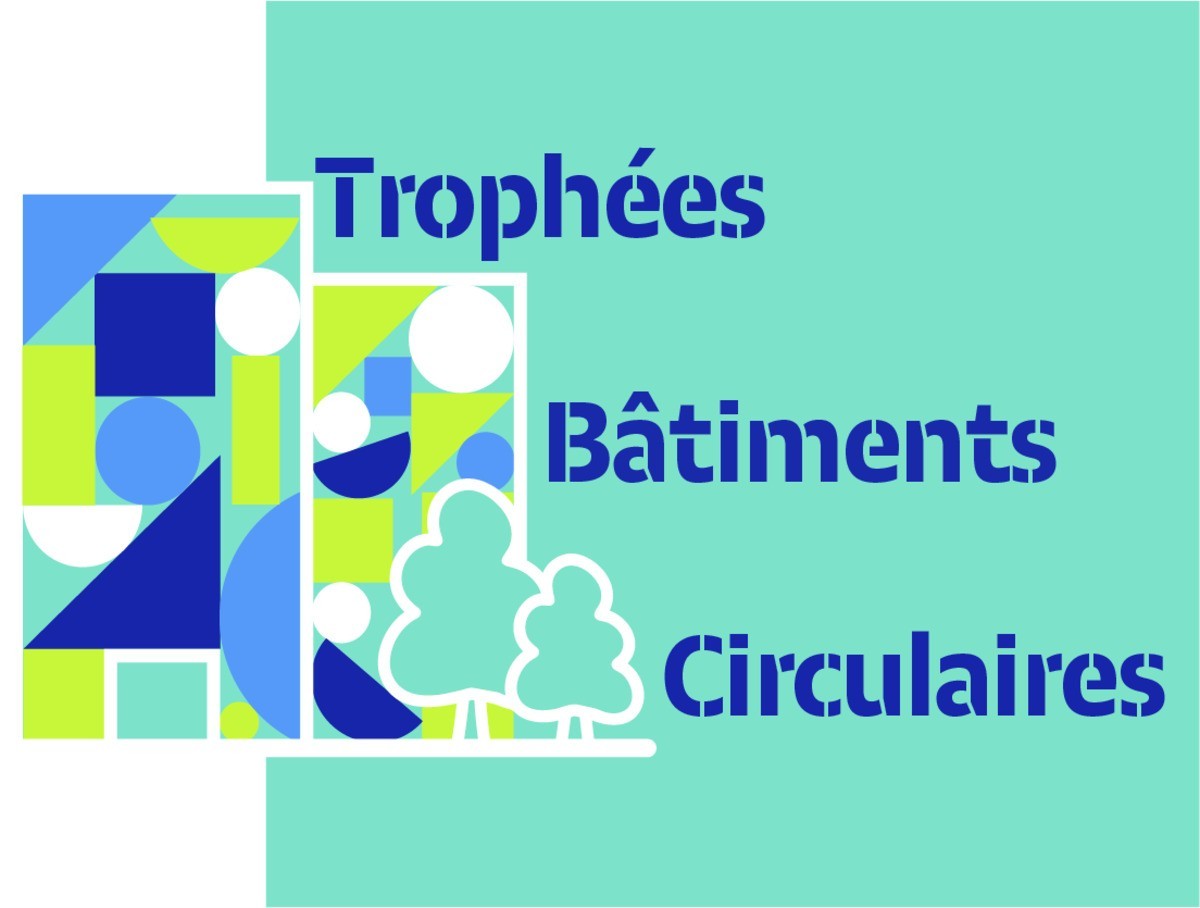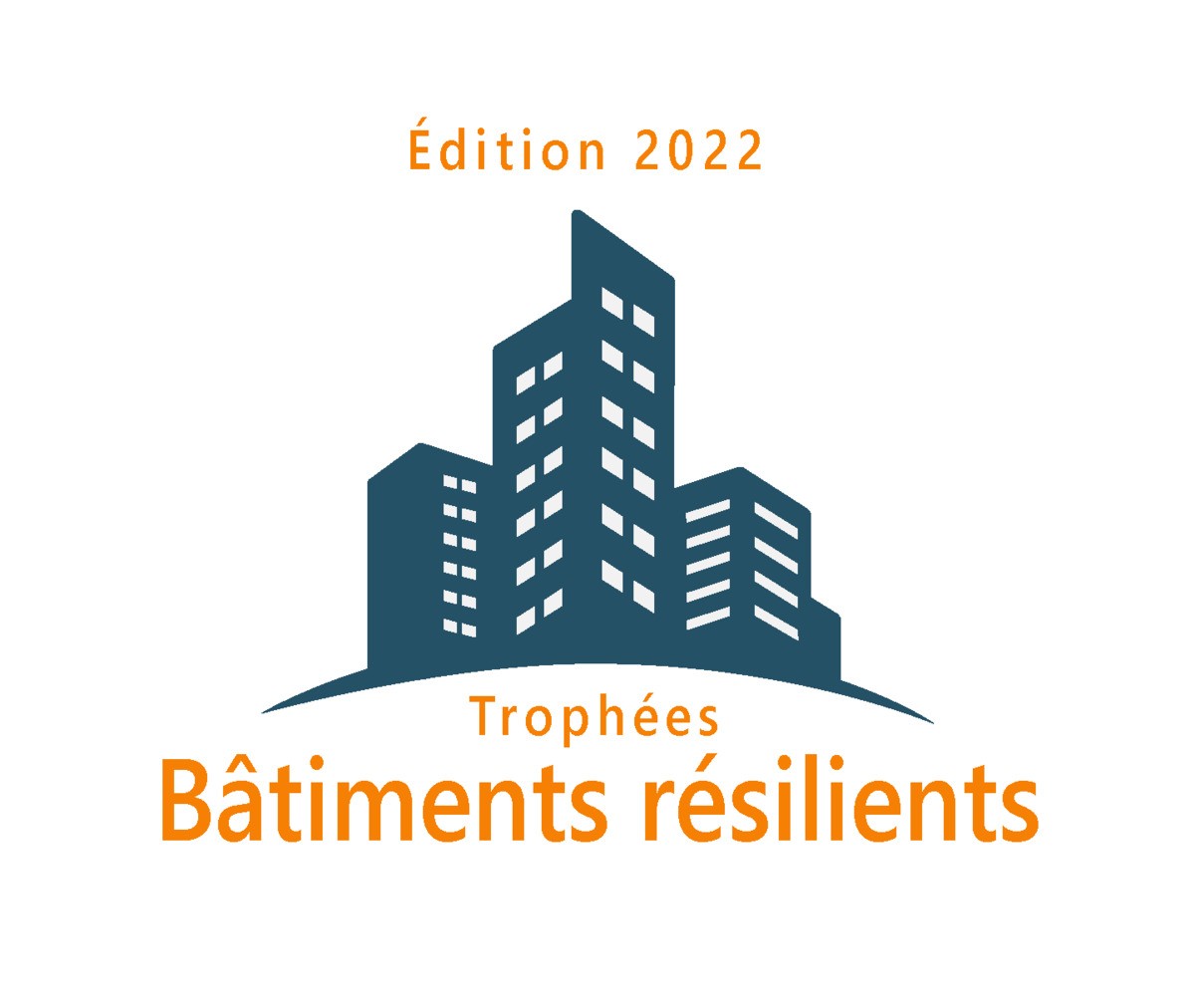Petite-Terre tourist information center
Last modified by the author on 19/05/2022 - 00:00
New Construction
- Building Type : Library, documentation center
- Construction Year : 2021
- Delivery year : 2022
- Address 1 - street : Rue du Four à Chaux 97615 DZAOUDZI LABATTOIR, France
- Climate zone : [Aw] Tropical Wet & Dry with dry winter.
- Net Floor Area : 77 m2
- Construction/refurbishment cost : 431 169 €
- Number of Seat : 4 Seat
- Cost/m2 : 5599.6 €/m2
-
Primary energy need
25 kWhep/m2.an
(Calculation method : RTAA DOM 2016 )
" A tourism office ! That's another Mzoungou* thing! »
This is precisely what we wanted to avoid by proposing a building that extends over the public space. An information center which shines and which makes it possible to arouse the curiosity of all Mahorais, even those who are not used to visiting this type of place. The Petite Terre Tourist Office is designed as an interior-exterior. The reception area opens completely so that the Tourist Office extends into the public space.
The building unfolds on the outside with the help of successive doors that become information panels.
Associated with a map on the ground, they offer a first playful way to document themselves to all passers-by who will only have to enter if they want to learn more...
Strategically positioned at the main crossroads of Petite-Terre, the Tourist Office had to carve out a small place in an already busy urban development.
To give it the place it deserves, we have notably chosen to erase the existing and unrewarding public toilets by including them in the project.
This generates an architecture of boxes linked by a wooden frame and topped with a stretched canvas over-roof. This layout facilitates the cooling of interior spaces and the South-South-West and North-North-East orientation promotes natural ventilation .
Tourism being totally dependent on the quality of the territory it promotes, we had to offer an examplary building, respectful of its environment and energy efficient.
To go further in this goal, the project uses carefully chosen materials responding to an ecological and anti-waste ethic :
- The cladding is made up of recycled plastic scales, a symbol of the recycling of waste that is unfortunately found in droves on the beaches of Mayotte;
- A map of the island made of crushed stones makes it possible to revalorize the smallest fragments of stones.
We hope that the Petite-Terre Tourist Office will be able to promote the island and offer a positive and ambitious idea of what it can become.
*Mzoungou: Name given to whites in Mayotte
Building users opinion
From January to April, the climate is hot and humid with very little wind. Offices designed to be naturally ventilated remain a little too hot and the ceiling fans are unfortunately not sufficient for thermal comfort. Air conditioning will therefore be added.
In the reception area, which is much more open, the temperature is decent.
If you had to do it again?
We could possibly add ventilation transoms in the offices, but unfortunately it is very difficult to escape the air conditioning in the offices in Mayotte.
See more details about this project
https://www.construction21.org/france/articles/h/green-solutions-petite-terre-le-nouvel-office-de-tourisme-ecoresponsable-a-mayotte.htmlPhoto credit
The photos and diagrams were produced by Tand'M Architectes which authorizes Construction21 France to use them.
Contractor
Construction Manager
Stakeholders
Company
SMR BTP ALU
Structural work + interior fittings
Company
Bioclimatik
Framework-Covering-Cladding
Company
Batimetal
Locksmith-Carpentry
Company
Colas Bois
Interior furniture
Company
MT2C
Plumbing
Company
EMI
electricity
Energy consumption
- 25,00 kWhep/m2.an
- 165,00 kWhep/m2.an
Systems
- No heating system
- No domestic hot water system
- No cooling system
- Natural ventilation
- No renewable energy systems
Risks
- Flooding/Sea Surge
- Earthquake
- Wind / Cyclone
Urban environment
- 251,00 m2
- 41,00 %
- 40,00
Product
Ferrari shade
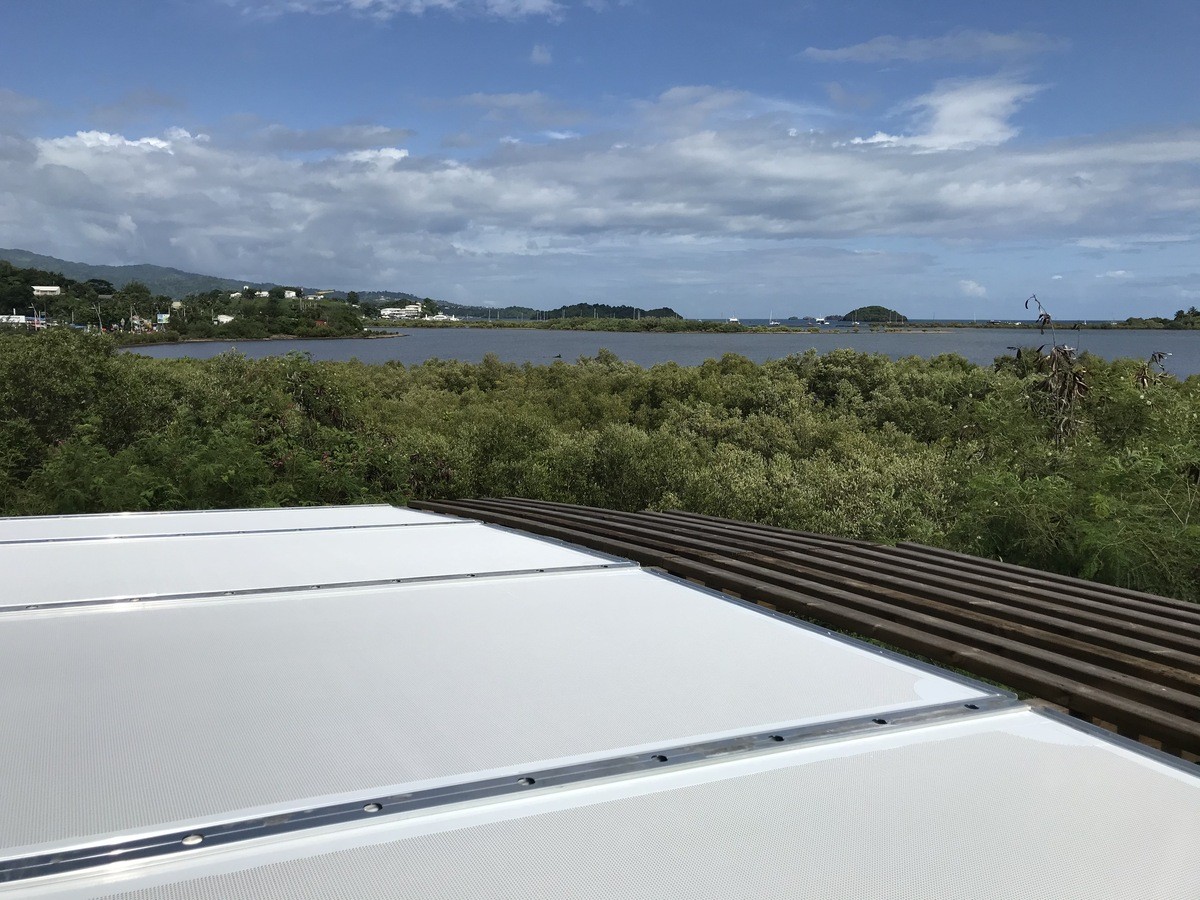
Serge Ferrari
https://www.sergeferrari.com/fr-frStructural work / Carpentry, cover, titghtness
We had to cover several volumes (one existing and one created) with a large over-roof to unify the project and protect it from the sun. The cyclonic constraints led us to this light and microperforated material.
This solution was very quickly accepted by the Project Owner.
Today, in addition to the technical expectations, the product offers us beautiful plays of light on the building.
Recycled plastic tiles
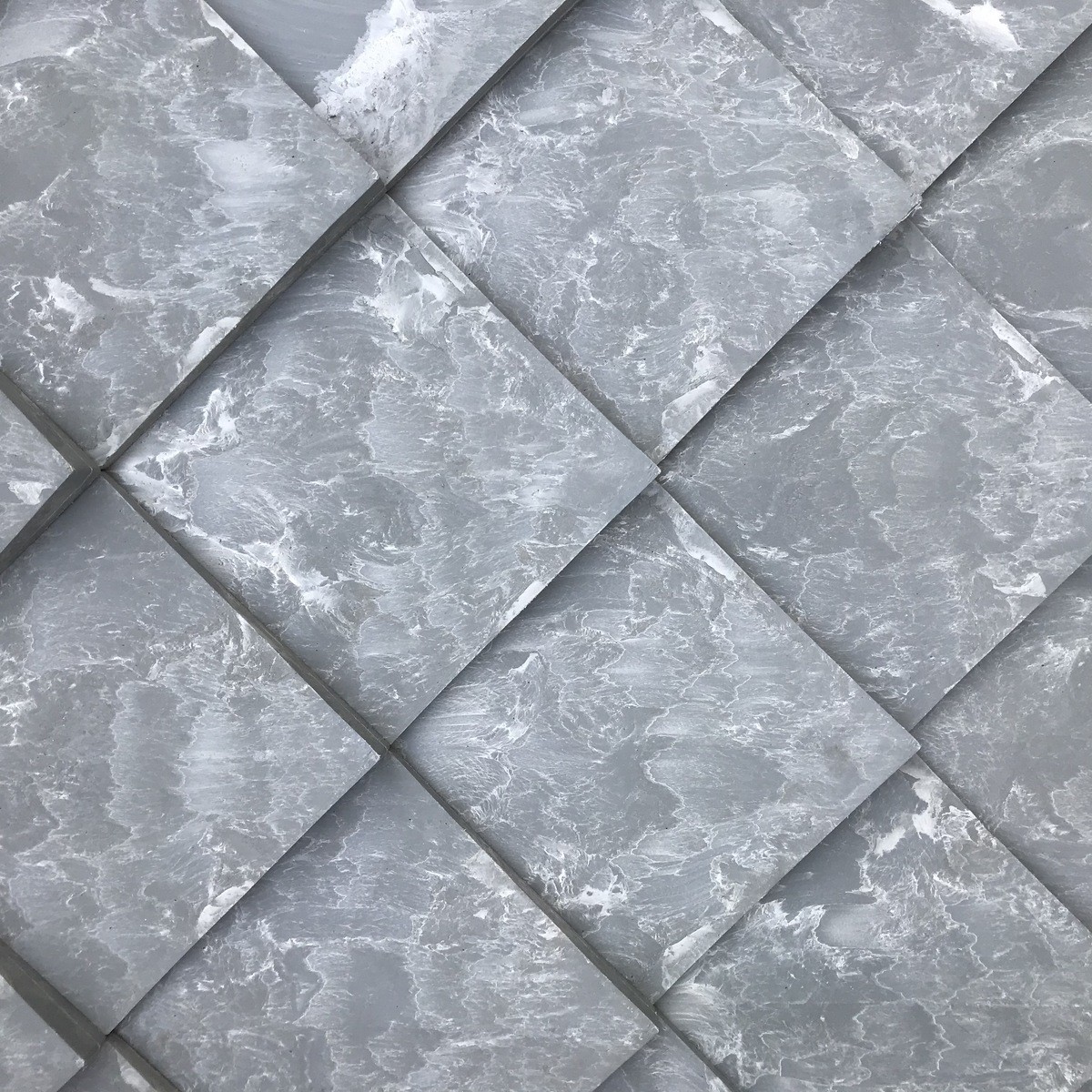
Pretty Plastic
https://www.prettyplastic.nl/Structural work / Structure - Masonry - Facade
We chose to use this recycled plastic material to show what we could manage to do with all the plastic waste that is in our bins and on our beaches.
We discovered the material after the contracts were awarded. This forced us to convince the company to lay the Pretty Plastic scales rather than Reynobon type plates as originally planned.
Not knowing the product, the company was particularly reluctant to accept this idea.
The problem was not so much a question of money since Reynobon is a more expensive product. The company did not want to commit to installing a product on which it had no feedback. This negotiation was ultimately the most complicated test in the project.
The contracting authority, for its part, placed its full trust in us. They appreciated the symbol of the Tourist Office which enhances its territory by cleaning it, but they are above all proud to build the first recycled plastic building in Mayotte.
Construction and exploitation costs
- 21 513 €
- 431 169 €
Reuse : same function or different function
- Facades
Environmental assessment
Economic assessment
- 11 570 €
- 3 %
Indoor Air quality
Life Cycle Analysis
Reasons for participating in the competition(s)
Le bâtiment de l’Office de Tourisme répond à plusieurs problématiques fortes.
Il s’implante sur un territoire magnifiquement contraignant qui impose une conception particulière et qui lui permet aujourd’hui de prendre sa place dans la compétition pour les trophées Bâtiments Résilients 2022 et Bâtiments Circulaires 2022.
Contraintes climatiques :
Entre deux eaux, celles du lagon et celles de la vasière, le bâtiment bénéficie de vues et d’espaces remarquables mais ne peut échapper aux submersions marines qui apparaissent lors des marées exceptionnelles et qui seront de plus en plus fréquentes avec la montée des eaux. Pour s’adapter, le plancher bas a été surélevé de 50 cm. Mais, si le niveau des océans continue de monter, dans quelques années, certaines marrées seront amenées à entrer dans le bâtiment. Le sol a donc été réalisé en béton lissé pour accepter d’être immergé pendant un temps court. Il sèchera rapidement une fois que la marée sera redescendue.
En étant si proche du lagon, le bâtiment s’expose également aux vents les plus forts. Sans obstacles, ceux-ci peuvent atteindre plus de 100km/h. L’Office de Tourisme a donc été dimensionné pour répondre à ces contraintes. La sur-toiture est en toile microperforée. Elle stoppe le rayonnement solaire pour limiter la surchauffe du bâtiment mais laisse passer l’air, évitant ainsi tout arrachement en période cyclonique. Le bardage en tuile de plastique recyclé, utilisé pour la première fois à Mayotte, a dû subir des tests spéciaux pour vérifier sa tenue au vent sous une force de 30 mètres par seconde.
La naissance d’un volcan sous-marin à 50km du site du projet a également rendu la réalisation plus complexe. Mayotte est classée en zone sismique 3 et, bien que de plain-pied, l’Office de Tourisme a dû être dimensionné pour résister aux tremblements de terre. La charpente bois, mise en valeur dans ce projet, dévoile les contraintes de contreventements de manière explicite.
Contraintes territoriales :
Mayotte est un territoire petit et précieux. Il y a très peu de ressources de matière pour construire un bâtiment mais beaucoup d’enjeux pour préserver la nature.
L’Office de Tourisme de Petite Terre a été conçu dans un esprit de « prototype » pour l’île. L’idée est de proposer le plastique recyclé comme nouveau matériau local.
Avant de créer une filière de recyclage il fallait tester et convaincre. Ici, le plastique recyclé est mis en scène par un bardage de tuiles de plastique grises créées à Amsterdam à partir des plastiques des descentes d’eau pluviales et des menuiseries de bâtiments démolis.
Aujourd’hui les usagers sont séduits par ce matériaux tant sur les côtés esthétiques que pratiques. Les preuves sont faites, la filière de recyclage peut donc se lancer. Les démarches sont en cours et les premiers matériaux en plastique recyclé de Mayotte seront réalisés d’ici fin 2022.
Cette innovation qui prend du sens sur toute la planète est particulièrement intéressante sur un territoire de 375km² puisqu’il n’y a pas assez de ressources pour produire des matériaux de construction et trop peu de place pour stocker des déchets plastiques. La revalorisation de ces plastiques en matériaux de construction sur place permettra de limiter les exports de déchets vers l’Europe et les imports de nouveau matériaux sur l’île, réduisant ainsi réellement l’énergie grise de nos bâtiments.
L’Office de Tourisme de Petite Terre est le premier pas vers cette avancée.
Building candidate in the category





